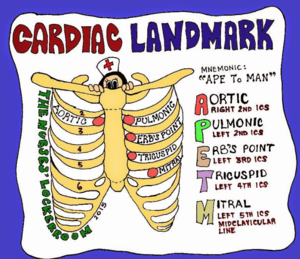14128903
ANA - Coronary Artery Disease
Resource summary
Question 1
Question
Angina
Ineffective tissue [blank_start]perfusion[blank_end]:Cardiac
Keep the prescribed [blank_start]GTN[blank_end] tablet at the person’s side so that e can take it at the onset of [blank_start]pain[blank_end]. Anginal pain indicates Myocardial [blank_start]ischaemia[blank_end] GTN causes [blank_start]vasodilation[blank_end] improving [blank_start]oxygen[blank_end] supply which relieves pain and ischaemia
Plan activity to allow [blank_start]rest[blank_end] between them
Teach about prescribed medications to maintain myocardial perfusion reduce cardiac work.
Instruct to take sublingual [blank_start]glyceryl trinate[blank_end] before engaging in [blank_start]activities[blank_end] that precipitate angina such as (climbing stairs, sexual intercourse, etc)
Encourage the person to have an [blank_start]exercise[blank_end] program under [blank_start]supervision[blank_end] of a primary care provider or a cardiac [blank_start]rehabilitation[blank_end] professional
Refer individual to [blank_start]smoking cessation[blank_end] program as indicated.
Risk of [blank_start]ineffective[blank_end] therapeutic regimen management
Assess knowledge and understanding of [blank_start]angina[blank_end]
[blank_start]Teach[blank_end] individual about angina and atherosclerosis, building on current [blank_start]knowledge[blank_end] base
Provide [blank_start]written[blank_end] and [blank_start]verbal[blank_end] instructions prescribed medication and their use
Stress the importance of taking [blank_start]chest pain[blank_end] seriously while maintaining a [blank_start]positive[blank_end] attitude.
Refer to a [blank_start]cardiac rehabilitation program[blank_end] or other organised activities and [blank_start]support[blank_end] groups for individuals with CHD
Answer
-
perfusion
-
GTN
-
pain
-
ischaemia
-
vasodilation
-
oxygen
-
rest
-
glyceryl trinate
-
activities
-
exercise
-
supervision
-
rehabilitation
-
smoking cessation
-
ineffective
-
angina
-
Teach
-
knowledge
-
written
-
verbal
-
chest pain
-
positive
-
cardiac rehabilitation program
-
support
Question 2
Question
MI
Acute Pain
Assess for verbal and [blank_start]non-verbal[blank_end] signs of pain. Document characteristics and the intensity of pain using a [blank_start]standard pain scale.[blank_end]
Administer O2 at [blank_start]2[blank_end] to [blank_start]5[blank_end] L/min per nasal prongs.
Promote physical and psychological [blank_start]rest[blank_end]. Provide information and emotional support
Administer prescribed PRN medication
Ineffective Tissue Perfusion
Assess and document vital sign. Report [blank_start]increase in[blank_end] BP, HR change in [blank_start]rhythm[blank_end], and RR
Assess for change in LOC:decrease urine output, delayed Cap [blank_start]refill[blank_end], and diminished pedal pulses
Auscultate [blank_start]heart[blank_end] and breath sounds. Note for abnormal sounds
Ineffective coping
Established an environment of caring and trust. Encourage patient to express feelings
Accept denial as a coping mechanism, but do not reinforce it
Note [blank_start]aggressive[blank_end] behaviours, hostility or anger.
Provide opportunities for the person to make [blank_start]decisions[blank_end] about the plan of [blank_start]care[blank_end] as much as possible
Provide [blank_start]privacy[blank_end] for the person and significant other to share their questions and concerns
Fear
Identify the person’s [blank_start]level of fear[blank_end] noting verbal and non-verbal signs
[blank_start]Acknowledge[blank_end] the person’s perception of the situation. Allow individuals to verbalise their concern
Encourage questions and provide consistent, [blank_start]factual[blank_end] answers
Encourage self-care
Teach non-pharmacological methods of [blank_start]stress reduction[blank_end] (e.g. relaxation technique,breathing exercises, meditation, massage)
Answer
-
non-verbal
-
standard pain scale.
-
2
-
5
-
rest
-
increase in
-
rhythm
-
refill
-
heart
-
aggressive
-
decisions
-
care
-
privacy
-
level of fear
-
Acknowledge
-
factual
-
stress reduction
Want to create your own Quizzes for free with GoConqr? Learn more.

